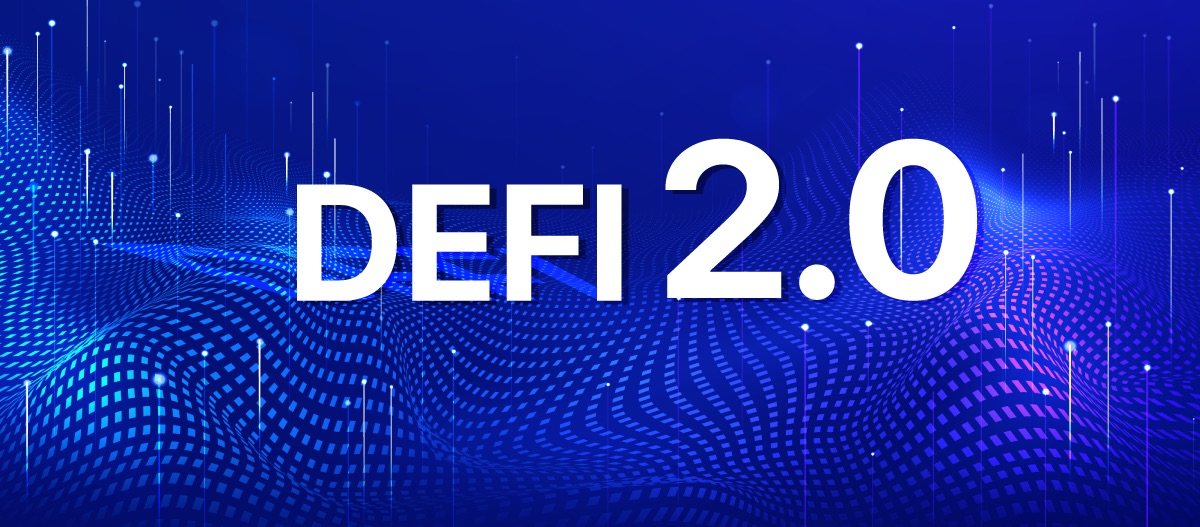
DeFi 2.0 – Innovation or a Meme?
The conversation of DeFi is a long one. Whenever we talk about anything decentralized, an array of familiar things pop up like liquidity, scalability, and sometimes, security.
These are some of the widely known and accepted problems of the current Decentralized Finance systems. They’re like flaws in a partner that we intentionally overlook for the sake of the relationship. The majority of concern has been around managing that early growth spurt of your crypto project alongside a timely exit strategy.
That might not have been what the developers had envisioned, but it’s certainly what it has become. People jump in and out of DeFi for a quick pick-me-up, feeding on the little sustainability there ever was. Among other things, that had led to bad liquidity or even lack of liquidity, in general.
Enters DeFi 2.0, but with a disclaimer that it is yet a full-fledged solution. Rather, it’s an idea of the solution to the DeFi we already know. The self-proclaimed second generation of DeFi is supposed to solve its liquidity problem and create a sustainable pool of assets for those involved.
The answer to how it’s going to do all that is a developing story. We’re probably nearing finding out what the plot is, but remember there’s usually a twist somewhere. But for the most part, the main intent of DeFi 2.0 seems to center around maintaining liquidity and incentives for users.
The Problems of DeFi 1.0
Despite its current state, the old DeFi gave us many things. From AMM to liquidity mining to exotic tokens with the coolest sounding names, the world was filled with options. One thing that stood out from variety was liquidity mining or yield farming.
The AMM allows seemingly anyone to create an enterprise from almost nothing as long as it has a coin and some liquidity to back it up. Fascinating was the idea that one could build an empire with a small loan and a couple of lines of code. This attracted the masses along with an army of cloned cryptocurrencies.
Most would think the hardest thing when starting a project is the initial bankroll, but it’s actually the longevity of that bankroll that really tests you. It’s not hard to attract hyped-up rookies to buy your coins because when there’s money in circulation there’s assurance. The real problem is the large number of compensatory tokens you give them to make them want to buy in. It’d be fine if the crypto starts doing well, but there’s always a hanging cloud of giant sell-outs and that isn’t healthy for a network. That’s why when a developer pulls financial support, the tokens will pour out, leaving either nothing or bad liquidity behind. This happens predictably often enough to discourage new users as well as dedicated developers from taking their shot.
DeFi 2.0 – OlympusDAO
DeFi 2.0 would never come to life without someone taking the lead. There’s a handful of organizations dabbling into the initiative plus a few more no doubt lurking somewhere in the metaverse cooking up something good.
It seems the approach to this is still finding its own shape, but Olympus has quite an interesting take. By issuing its native token, the $OHM, at a discounted rate, Olympus encourages people to trade in their other crypto assets, such as ETH, Solana, etc. These assets don’t go to the developers but instead, remain in the Olympus protocol as a liquidity pool. They call it Protocol Owned Liquidity (POL) – something that generates more income as users tap into the pool for whatever needs.
This is an ingenious idea because it gives users a sense of fast accomplishment. It also raises demand for the token, which in turn, increases the price. That’s essentially twice the incentives for the same investment. Moreover, as the price increases, the trade-in will slow down on its own until people sell and bring it down again. All the while they earn swap fees without worrying about liquidity.
Having discounted bonds also helps combat impermanent loss when staking your coins. It used to be a waiting game but this DeFi 2.0 mechanic can potentially clear the path for some of us.
DeFi 2.0 – Will It Actually Work?
Of course, it will. Why wouldn’t centralizing liquidity on a decentralized system work?
On a serious note, things do seem promising, albeit to a short extent. As you would have noticed, the concept of POL centralizes assets, which invalidates the basis DeFi was built on in the first place.
In all fairness, though, after years of letting DeFi prove itself while witnessing the struggle of bitcoin with scalability, some degree of centralization might help ease things up.
Another problem comes down to necessity. Putting 2.0 behind something usually implies that 1.0 no longer works. In this case, DeFi 1.0 will always work. In fact, DeFi 2.0 might function well even long down the road but would stop doing so without the foundation of 1.0.
People will continue to breed ephemeral projects on DeFi and others will continue to buy into them. Things may seem to be slowing down due to an influx of opportunities from NFTs and DAOs, but the rush of fast ownership is always there. Not a lot of us can resist the excitement of a new project and the absolute detachment of strings, and DeFi makes both of which possible.
